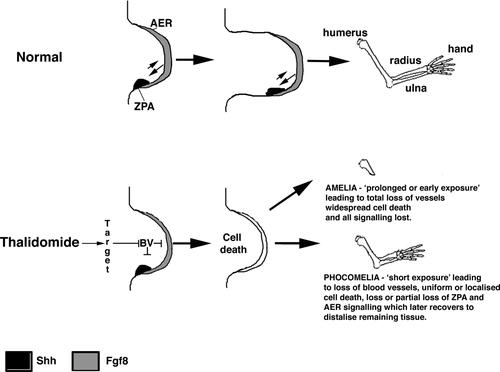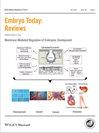下载PDF
{"title":"Thalidomide-induced teratogenesis: History and mechanisms","authors":"Neil Vargesson","doi":"10.1002/bdrc.21096","DOIUrl":null,"url":null,"abstract":"<div>\n <p>Nearly 60 years ago thalidomide was prescribed to treat morning sickness in pregnant women. What followed was the biggest man-made medical disaster ever, where over 10,000 children were born with a range of severe and debilitating malformations. Despite this, the drug is now used successfully to treat a range of adult conditions, including multiple myeloma and complications of leprosy. Tragically, a new generation of thalidomide damaged children has been identified in Brazil. Yet, how thalidomide caused its devastating effects in the forming embryo remains unclear. However, studies in the past few years have greatly enhanced our understanding of the molecular mechanisms the drug. This review will look at the history of the drug, and the range and type of damage the drug caused, and outline the mechanisms of action the drug uses including recent molecular advances and new findings. Some of the remaining challenges facing thalidomide biologists are also discussed. Birth Defects Research (Part C) 105:140–156, 2015. © 2015 The Authors Birth Defects Research Part C: Embryo Today: Reviews Published by Wiley Periodicals, Inc.</p></div>","PeriodicalId":55352,"journal":{"name":"Birth Defects Research Part C-Embryo Today-Reviews","volume":"105 2","pages":"140-156"},"PeriodicalIF":0.0000,"publicationDate":"2015-06-04","publicationTypes":"Journal Article","fieldsOfStudy":null,"isOpenAccess":false,"openAccessPdf":"https://sci-hub-pdf.com/10.1002/bdrc.21096","citationCount":"583","resultStr":null,"platform":"Semanticscholar","paperid":null,"PeriodicalName":"Birth Defects Research Part C-Embryo Today-Reviews","FirstCategoryId":"1085","ListUrlMain":"https://onlinelibrary.wiley.com/doi/10.1002/bdrc.21096","RegionNum":0,"RegionCategory":null,"ArticlePicture":[],"TitleCN":null,"AbstractTextCN":null,"PMCID":null,"EPubDate":"","PubModel":"","JCR":"Q","JCRName":"Medicine","Score":null,"Total":0}
引用次数: 583
引用
批量引用
Abstract
Nearly 60 years ago thalidomide was prescribed to treat morning sickness in pregnant women. What followed was the biggest man-made medical disaster ever, where over 10,000 children were born with a range of severe and debilitating malformations. Despite this, the drug is now used successfully to treat a range of adult conditions, including multiple myeloma and complications of leprosy. Tragically, a new generation of thalidomide damaged children has been identified in Brazil. Yet, how thalidomide caused its devastating effects in the forming embryo remains unclear. However, studies in the past few years have greatly enhanced our understanding of the molecular mechanisms the drug. This review will look at the history of the drug, and the range and type of damage the drug caused, and outline the mechanisms of action the drug uses including recent molecular advances and new findings. Some of the remaining challenges facing thalidomide biologists are also discussed. Birth Defects Research (Part C) 105:140–156, 2015. © 2015 The Authors Birth Defects Research Part C: Embryo Today: Reviews Published by Wiley Periodicals, Inc.
沙利度胺致致畸:历史和机制
大约60年前,沙利度胺被用来治疗孕妇的孕吐。随之而来的是有史以来最大的人为医疗灾难,超过1万名儿童出生时患有一系列严重和衰弱的畸形。尽管如此,这种药物现在成功地用于治疗一系列成人疾病,包括多发性骨髓瘤和麻风病的并发症。可悲的是,巴西发现了新一代沙利度胺损伤儿童。然而,沙利度胺是如何对胚胎形成造成破坏性影响的,目前尚不清楚。然而,过去几年的研究大大提高了我们对药物分子机制的认识。这篇综述将着眼于药物的历史,药物引起的损害的范围和类型,并概述药物的作用机制,包括最近的分子进展和新发现。还讨论了沙利度胺生物学家面临的一些剩余挑战。出生缺陷研究(C辑)105:140-156,2015。©2015作者出生缺陷研究C部分:胚胎今日:评论由Wiley期刊公司出版。
本文章由计算机程序翻译,如有差异,请以英文原文为准。


 求助内容:
求助内容: 应助结果提醒方式:
应助结果提醒方式:


